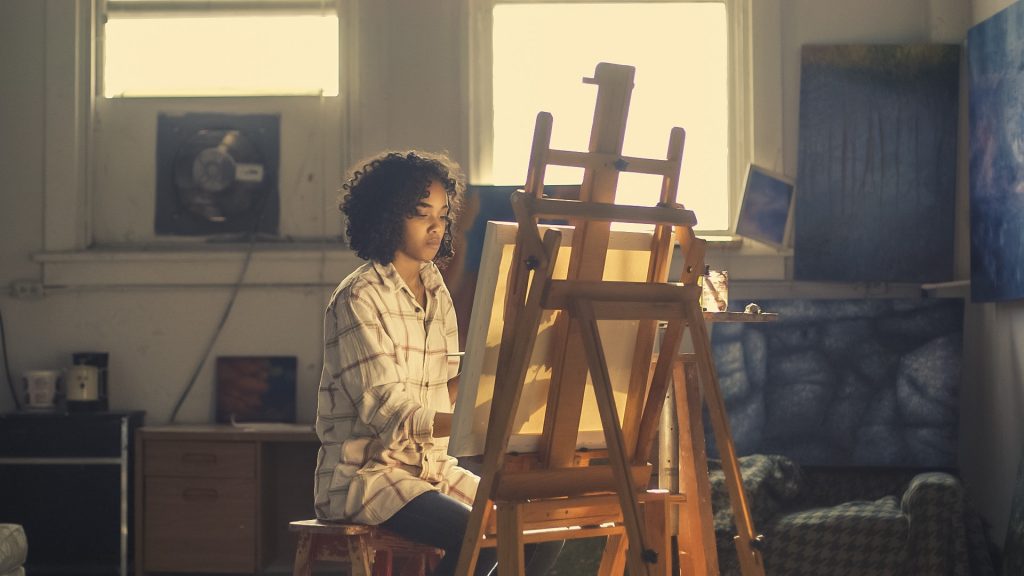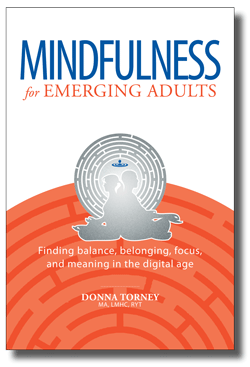But it sometimes happens that I cannot easily shake off the village. The thought of some work will run in my head and I am not where my body is, I am out of my senses. In my walks I would fain return to my senses. What business have I in the woods, if I am thinking of something out of the woods?
-Henry David Thoreau

Focus can be improved
Focus can be improved using mindfulness-informed tools that are designed to increase mental concentration and inner calm. The art and science of focusing has many faces. It may look like a man sitting in solitude on a meditation cushion, or a woman sitting in a café slowly sipping from a paper cup, mindfully watching her thoughts. At other times the face of focus is a person absorbed in an art project, or a group of friends on a ten-mile run, or a teen absorbed in her favorite music. Of course, all of these activities can be done unmindfully – without focus – but they are infinitely more rewarding when performed with attention to the present moment. When we focus on our present moment experience, the brain rewires itself in such a way that it makes the experience more satisfying. With practice, we can gain the ability to focus on demand. Take a minute to think of an area in your life that could benefit from more focus.
Focus can arise when we are moving just as easily as when we are sitting. Stilling the mind is what matters. If you are feeling especially physically or mentally agitated or if the busyness of your life is getting you down, try these suggestions calling for stillness or internal focus. Building mental focus will benefit each one of the four domains of your life: balance, belonging, focus, and meaning.
Take note of what is distracting you – if you don’t feel ready for a meditation practice it’s okay. Start by noticing what is distracting you.
- Are your distractions fear-based – are you worrying about some future outcome?
- Are your distractions fantasy-based – is there something you don’t have that is stopping you from living your life in the here and now?
- Start by noting what takes you out of the present moment – just taking note of what is keeping you in a state of distraction is a step toward mindfulness.
Perform a single routine task mindfully – fold laundry, wash dishes, feed the dog without slipping into autopilot. So often, we get up in the morning and do our routine in zombie mode.
- Get out of bed and stretch for half a minute. What is the first thing you usually do in the morning? Can you do it with all your senses engaged?
- Resist automatic thoughts and mentally rehearsing your to-do list.
- You might find that the routine task is actually enjoyable, or you may decide to change the start of your day so that the very first task is something that feels pleasant, like reading a few pages in a good book versus checking your email.
Take a slow walk or run – routine exercise is another place where we can easily check our focus.
- Take your walk or go to the gym as usual, but consciously slow down your pace.
- Notice something new about the gym or the walking/running route you are on.
- Refrain from projecting into the future or thinking about the past. Sure, you may burn a few less calories by slowing down, but what you gain in tranquility and calm will more than make up for it.
Pet or play with an animal – if you have one, your dog or cat can become your Zen master.
- Take time out today to be with your pet and just with your pet. Animals are experts in being in the present moment.
- Get down on the floor and get on your pet’s level. Gaze into their eyes as you play with or pet them.
- Thank them for being your Zen master.
Belly breathe with a baby or small child – babies and young children can also anchor us to the present moment in a special way.
- If you have an infant in your life, take some time to watch them while they nap. Babies have not learned the bad habit of taking shallow breaths. Take long, slow breaths like a baby.
- If you have a toddler in your life, ask him or her to lie on the floor next to you. Place pillows on your bellies. Watch them as they float up and down on your belly as you take
long, deep inhales and exhales. - Take some time to giggle with your toddler as the pillows rise and fall.
Walk barefoot – if the temperature allows, kick your shoes off and walk in the grass for a few minutes.
- Walking barefoot requires mindfulness to avoid sharp objects or other outdoor goop.
- It is also immensely grounding and healing.
- Focus on how it feels to connect directly with the earth.
This is a good start to using mindfulness techniques to increase your ability to focus. Remember, without mindfully focusing on the present you will miss much of the experience.
Excerpted from Mindfulness for Emerging Adults by Donna Torney, MA, LMHC, RYT.

